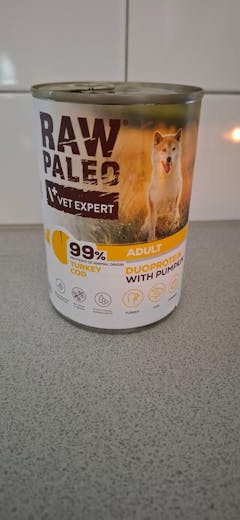Hundmat & Foder
Hundmat & Foder – Stort utbud av alla typer av hundfoder
Hundmat & Foder: Grunden för Din Hunds Hälsa och Välbefinnande
En balanserad och näringsrik kost är den absoluta grundpelaren för din hunds hälsa, energi och långa liv. Precis som för oss människor, spelar rätt hundmat och foder en avgörande roll för hundens immunförsvar, pälskvalitet, energinivåer, matsmältning och allmänna välmående. På Zoostar.se har vi sammanställt ett omfattande utbud av högkvalitativa foderlösningar som är skräddarsydda för att möta de unika behoven hos hundar i alla åldrar, storlekar, raser och med olika hälsotillstånd. Att välja rätt foder kan kännas överväldigande med alla alternativ som finns, men med vår expertis och noggrant utvalda produkter kan du känna dig trygg i att du ger din bästa vän de bästa förutsättningarna. Låt oss dyka djupare in i hur du kan optimera din hunds kost för ett liv fyllt av vitalitet och glädje.
Förstå Din Hunds Unika Näringsbehov
Varje hund är unik, och dess näringsbehov varierar beroende på flera faktorer. Att förstå dessa faktorer är det första steget mot att välja rätt hundmat och foder.
1. Ålder och Livsstadium:
- **Valpar:** En valp växer snabbt och behöver ett foder med högt protein- och fettinnehåll för att stödja den intensiva tillväxten, utvecklingen av muskler och ben, samt ett starkt immunförsvar. Valpfoder innehåller ofta en specifik balans av kalcium och fosfor för optimal skelettutveckling. Det är avgörande att valpfodret är anpassat för rasens förväntade storlek som vuxen, särskilt för stora raser som behöver långsam och kontrollerad tillväxt för att undvika ledproblem.
- **Vuxna Hundar:** Aktiva vuxna hundar behöver ett balanserat foder som upprätthåller deras energi, muskelmassa och allmänna hälsa. Mindre aktiva hundar kan behöva ett foder med lägre kaloriinnehåll för att undvika övervikt.
- **Seniorhundar:** Äldre hundar har ofta en långsammare metabolism och kan behöva foder för äldre hundar med lägre kaloriinnehåll för att förhindra viktuppgång. De kan också dra nytta av tillsatser som glukosamin och kondroitin för ledhälsa, och lättsmälta ingredienser för mag-tarmkanalen.
2. Storlek och Ras:
- **Små raser:** Har en snabbare metabolism och högre energibehov per kilogram kroppsvikt. De behöver därför ett mer energitätt foder, ofta med mindre foderbitar som är lätta för små munnar att hantera.
- **Stora raser:** Växer långsammare och behöver foder som stödjer en kontrollerad skelett- och ledutveckling för att förebygga problem som höftledsdysplasi. Fodret kan ha en annan mineralbalans och lägre energitäthet för att undvika för snabb tillväxt som kan belasta lederna.
3. Aktivitetsnivå:
- En mycket aktiv hund, som en arbetande hund, en idrottshund eller en hund som ägnar sig åt krävande sporter, kräver betydligt mer energi, protein och fett än en sällskapshund med en lugnare livsstil. Anpassa fodrets energitäthet efter hundens aktivitetsnivå för att bibehålla en hälsosam vikt och energinivå.
4. Hälsotillstånd och Särskilda Behov:
Många hundar har specifika hälsoproblem som kan hanteras eller lindras med ett specialanpassat foder.
- **Allergier/Känslig Mage:** Hundar med foderallergier eller känslig mage kan behöva spannmålsfritt hundfoder, foder med begränsat antal ingredienser (Limited Ingredient Diets, L.I.D.) eller hydrolyserat proteinfoder.
- **Viktkontroll:** För överviktiga hundar finns foder med lägre kaloriinnehåll men med tillräckligt med fibrer för att skapa mättnad.
- **Ledproblem:** Foder med tillsatser som glukosamin och kondroitin kan stödja ledhälsa.
- **Hud- och Pälsproblem:** Foder rika på omega-3 och omega-6 fettsyror kan förbättra hud- och pälskvalitet.
- **Sjukdomar:** För specifika sjukdomar som njursjukdom, diabetes eller urinvägsproblem finns veterinärfoder till hund som enbart ska användas på rekommendation av veterinär.
Typer av Hundmat: Torrfoder, Våtfoder och Veterinärfoder
På Zoostar.se erbjuder vi olika typer av hundmat för att tillgodose alla behov:
1. Torrfoder (Kibble):
- Torrfoder för hundar är den vanligaste typen av hundmat. Det är praktiskt, har lång hållbarhet och är ofta ekonomiskt. Torrfoder finns i en mängd olika varianter för olika åldrar, storlekar, raser och hälsotillstånd.
- **Fördelar:** Bidrar till god tandhälsa genom mekanisk rengöring, lätt att dosera, ekonomiskt, lång hållbarhet.
- **Nackdelar:** Lägre vattenhalt, vilket kräver att hunden dricker tillräckligt med vatten.
2. Våtfoder:
- Våtfoder för hundar är mycket aptitligt och har en hög vattenhalt, vilket är fördelaktigt för hundar som inte dricker tillräckligt, eller de med njur- och urinvägsproblem. Det finns i olika former som paté, bitar i sås eller gelé.
- **Fördelar:** Högt vätskeintag, mycket smakligt, lättsmält för vissa hundar, kan vara bra för viktminskning då det mättar bra.
- **Nackdelar:** Dyrare per portion, kortare hållbarhet efter öppning, bidrar inte till tandhälsa.
3. Veterinärfoder:
- Veterinärfoder till hund är specialutvecklade dieter som ska användas under veterinärs överinseende för att behandla eller hantera specifika medicinska tillstånd, som t.ex. allergier, njursjukdom, diabetes, ledbesvär eller urinvägsproblem. Dessa foder är noggrant balanserade för att stödja hundens återhämtning och välbefinnande.
- **Viktigt:** Används endast på rekommendation från veterinär.
4. Hundgodis och Tuggbitar:
- Förutom huvudmåltiderna är hundgodis och tuggbitar viktiga för träning, belöning och mental stimulans. Välj godis som är nyttigt och fritt från onödiga tillsatser. Många tuggben bidrar även till tandhälsa genom att reducera plack och tandsten.
Vikten av Kvalitet och Ingredienser i Hundfoder
När du väljer hundmat, är det avgörande att granska ingredienslistan. Ett högkvalitativt foder ska ha en namngiven proteinkälla (som kyckling, lamm, lax, nötkött) som första ingrediens. Undvik foder som listas med generiska termer som "kött och animaliska biprodukter" utan specifikation, då dessa kan vara av varierande kvalitet.
Se till att fodret innehåller en balanserad mix av:
- **Protein:** Nödvändigt för muskeluppbyggnad, reparation av vävnader och ett starkt immunförsvar. Välj foder med högkvalitativa, lättsmälta proteinkällor.
- **Fetter:** Viktiga energikällor, hjälper till med upptaget av fettlösliga vitaminer och bidrar till en frisk hud och glänsande päls (särskilt omega-3 och omega-6 fettsyror).
- **Kolhydrater:** Ger energi och fibrer. Välj kolhydratkällor som fullkorn (ris, havre, korn), grönsaker (potatis, sötpotatis) eller baljväxter (ärtor, linser). Undvik onödiga fyllnadsmedel. För känsliga hundar kan spannmålsfritt hundfoder vara ett bra alternativ.
- **Vitaminer och Mineraler:** Avgörande för alla kroppsfunktioner, från benhälsa till immunsystem. Ett komplett foder ska vara berikat med alla nödvändiga vitaminer och mineraler.
- **Fibrer:** Bidrar till en hälsosam matsmältning och regelbunden avföring.
Undvik foder med konstgjorda färger, smaker och konserveringsmedel. Naturliga konserveringsmedel som E-vitamin (tokoferoler) är att föredra.
Växla Foder och Förvaring
Om du behöver byta foder för din hund, gör det gradvis över 7-10 dagar för att undvika magbesvär. Börja med att blanda en liten mängd av det nya fodret med det gamla, och öka successivt andelen av det nya fodret varje dag.
Korrekt förvaring är också viktigt för att bibehålla fodrets fräschör och näringsvärde. Förvara torrfoder i sin originalförpackning (som ofta har en skyddande barriär) och placera sedan hela påsen i en lufttät behållare på en sval och torr plats. Öppnat våtfoder ska förvaras i kylskåp och konsumeras inom några dagar.
När Ska Du Rådgöra Med En Veterinär?
Om din hund har kroniska hälsoproblem, lider av allergier, övervikt, undernäring, eller om du är osäker på vilken hundmat som är bäst för den, är det alltid klokt att rådgöra med din veterinär. De kan ge personliga rekommendationer baserade på din hunds specifika situation och eventuellt rekommendera veterinärfoder.
Zoostar.se – Din Partner för Hundens Kost
På Zoostar.se är vi dedikerade till att erbjuda dig och din hund de bästa förutsättningarna för ett långt och hälsosamt liv. Vårt sortiment av hundmat och foder är noggrant utvalt från ledande varumärken som prioriterar kvalitet, näringsinnehåll och smaklighet. Oavsett om du söker valpfoder för din nya familjemedlem, foder för äldre hundar, spannmålsfritt hundfoder för en känslig mage, eller specifika veterinärfoder, hittar du det hos oss. Vi erbjuder även mjölkersättning och valpvälling för de allra minsta. Utforska vårt sortiment idag och investera i din hunds framtid genom att ge den bästa möjliga näringen. En välmående hund är en lycklig hund!
Vanliga frågor om Hundmat & Foder
Här besvarar vi några av de mest frekventa frågorna vi får angående hundmat och foder.
Hur väljer jag rätt hundmat till min hund?
Att välja rätt hundmat är avgörande för din hunds hälsa och välbefinnande. Det finns en uppsjö av olika typer och märken, och det som passar en hund kanske inte passar en annan. Här är de viktigaste faktorerna att överväga när du väljer hundfoder: 1. Ålder: Hundens ålder är en av de mest grundläggande faktorerna. Valpar, vuxna hundar och seniorhundar har mycket olika näringsbehov. - Valpar behöver valpfoder som är rikt på protein och fett för att stödja snabb tillväxt och utveckling. - Vuxna hundar behöver ett balanserat foder som upprätthåller deras energinivåer och hälsa. - Seniorhundar behöver foder med lägre kaloriinnehåll, ofta med extra stöd för leder och enklare smältbarhet. 2. Storlek och Ras: Stora och små raser har olika metabolism och utvecklingstakter. - Stora raser: Behöver foder som stödjer skelett- och ledutveckling för att förebygga problem som höftledsdysplasi. Fodret kan ha en annan mineralbalans och lägre energitäthet. - Små raser: Har högre metabolism och behöver ett mer energitätt foder, ofta i mindre bitar. 3. Aktivitetsnivå: En mycket aktiv hund, som en arbetande hund eller en idrottshund, kräver betydligt mer energi och protein än en sällskapshund med en lugnare livsstil. Anpassa fodrets energitäthet efter hundens aktivitetsnivå för att undvika över- eller undervikt. 4. Hälsotillstånd och Särskilda Behov: Många hundar har specifika hälsoproblem som kan hanteras med specialfoder. - Allergier/Känslig mage: Vissa hundar är känsliga mot spannmål, specifika proteinkällor (som kyckling eller nötkött) eller har matsmältningsproblem. Då kan spannmålsfritt foder, foder med begränsat antal ingredienser (limited ingredient diets, L.I.D.) eller hydrolyserat proteinfoder vara lämpligt. - Viktkontroll: För överviktiga hundar finns foder med lägre kaloriinnehåll men med tillräckligt med fibrer för att skapa mättnad. - Ledproblem: Foder med tillsatser som glukosamin och kondroitin kan stödja ledhälsa. - Hud- och pälsproblem: Foder rika på omega-3 och omega-6 fettsyror kan förbättra hud- och pälskvalitet. - Njursjukdom, diabetes, urinvägsproblem: För dessa tillstånd finns specifika veterinärfoder som enbart ska användas på rekommendation av veterinär. 5. Ingredienslista och Kvalitet: Läs alltid ingredienslistan noggrant. Kvalitetsfoder har ofta: - En namngiven proteinkälla som första ingrediens (t.ex. kyckling, lamm, lax). Undvik generiska termer som 'kött och animaliska biprodukter'. - Balanserade fetter, kolhydrater (från fullkorn, grönsaker eller potatis) och vitaminer/mineraler. - Undvik foder med onödiga fyllnadsmedel, konstgjorda färger, smaker och konserveringsmedel. Att välja rätt foder kan vara en process som kräver att du testar dig fram. Var uppmärksam på din hunds energinivå, pälskvalitet, avföring och allmänna välmående som indikatorer på om fodret är rätt. Rådfråga alltid din veterinär om du är osäker eller om din hund har specifika hälsoproblem.
Vad är skillnaden mellan torrfoder och våtfoder och vilket är bäst?
Både torrfoder och våtfoder har sina unika fördelar och nackdelar. Det finns inget entydigt 'bäst' foder; det optimala valet beror på hundens individuella behov, hälsotillstånd och ägarens preferenser. Många väljer att kombinera båda typerna för att dra nytta av fördelarna med båda. Torrfoder (kibble): Egenskaper: - Låg vattenhalt (ca 5-10%). - Hög energitäthet per volym. - Kommer i form av små, hårda bitar (kibble). Fördelar: - Bekvämt och ekonomiskt: Lätt att lagra, har lång hållbarhet och är ofta billigare per portion än våtfoder. - Tandhälsa: Kan bidra till att reducera plack och tandsten genom att mekaniskt skrapa tänderna när hunden tuggar. - Portionskontroll: Lätt att mäta exakta portioner, vilket är bra för viktkontroll. - Miljöaspekt: Mindre förpackningsmaterial per näringsenhet jämfört med våtfoder. Nackdelar: - Lägre vätskeintag: Eftersom vattenhalten är låg, är det viktigt att hunden dricker tillräckligt med vatten. Kan vara en nackdel för hundar som inte dricker tillräckligt, eller de med njur- eller urinvägsproblem. - Mindre smakligt: Kan vara mindre aptitligt för kräsna hundar jämfört med våtfoder. - Fyllnadsmedel: Vissa billigare torrfoder kan innehålla en större andel fyllnadsmedel. Våtfoder (konserv, påse): Egenskaper: - Hög vattenhalt (ca 70-85%). - Finns i olika former som paté, bitar i sås/gelé, eller köttfärs. Fördelar: - Högt vätskeintag: Bidrar betydligt till hundens dagliga vätskeintag, vilket är bra för urinvägshälsa och för hundar som inte dricker tillräckligt. - Mycket aptitligt: Generellt mer smakligt och aromatiskt, vilket gör det populärt bland kräsna hundar. - Lättsmält: Kan vara lättare för vissa hundar, särskilt äldre eller de med tandproblem, att äta och smälta. - Passar för viktminskning: Hög vattenhalt gör att det har lägre kaloriinnehåll per volym, vilket kan hjälpa hundar att känna sig mätta på färre kalorier. Nackdelar: - Dyrare: Generellt dyrare per portion än torrfoder. - Kortare hållbarhet: Öppnade förpackningar måste förvaras i kylskåp och konsumeras inom kort tid. - Mindre bra för tandhälsa: Bidrar inte till mekanisk rengöring av tänderna på samma sätt som torrfoder. - Förpackningsmaterial: Genererar mer avfall per näringsenhet. Hybridutfodring (blandning av torrfoder och våtfoder): Många hundägare väljer att kombinera torrfoder med en mindre mängd våtfoder. Detta kan vara ett utmärkt sätt att dra nytta av båda typernas fördelar: - Våtfodrets aptitlighet kan locka kräsna hundar att äta torrfodret. - Våtfodret bidrar till vätskeintaget. - Torrfodret bidrar till tandhälsa och är mer ekonomiskt. Det bästa fodret är det som din hund trivs med, mår bra av, och som tillgodoser alla dess näringsbehov. Regelbundna veterinärbesök och observation av hundens allmänna hälsa hjälper dig att utvärdera om du har hittat rätt foder.
Vad är veterinärfoder och när ska det användas?
Veterinärfoder (även kallat terapeutiskt foder eller dietfoder) är specialformulerade hundfoder som är avsedda att användas som en del av behandlingen eller hanteringen av specifika medicinska tillstånd hos hundar. Till skillnad från vanliga hundfoder, som är utformade för att möta näringsbehoven hos friska hundar, är veterinärfoder utvecklade för att stödja eller förbättra hälsan hos hundar med olika sjukdomar eller åkommor. När ska veterinärfoder användas? Veterinärfoder ska alltid användas under överinseende och på rekommendation av en veterinär. De är inte avsedda för friska hundar och kan i vissa fall vara olämpliga om de ges felaktigt. Här är några vanliga tillstånd där veterinärfoder kan vara indicerat: 1. Allergier och foderintolerans: - Hydrolyserat proteinfoder: Proteiner har brutits ner till så små molekyler att immunsystemet inte reagerar på dem, vilket minskar risken för allergiska reaktioner. - Foder med begränsat antal ingredienser (Limited Ingredient Diet, LID): Innehåller en enda, ofta ny, proteinkälla och en enda kolhydratkälla för att minimera exponeringen för potentiella allergener. 2. Mag- och tarmproblem (gastrointestinala problem): - Lättsmält foder: Formulerat med lättsmälta proteiner, kolhydrater och fetter, ofta med tillsatt prebiotika och probiotika för att stödja en hälsosam tarmflora. Används vid diarré, kräkningar, pankreatit (bukspottkörtelinflammation) eller inflammatorisk tarmsjukdom (IBD). 3. Njursjukdom: - Njurfoder: Har minskat protein- och fosforinnehåll för att minska belastningen på njurarna och bromsa sjukdomsförloppet. Ofta med tillsatta omega-3 fettsyror för att minska inflammation. 4. Urinvägsproblem (t.ex. urinsten): - Urinfoder: Justerar urinens pH-värde och mineralinnehåll för att lösa upp befintliga urinstenar (t.ex. struvitstenar) eller förhindra bildandet av nya. 5. Ledproblem: - Ledfoder: Innehåller högre nivåer av glukosamin, kondroitin, omega-3 fettsyror (särskilt EPA och DHA) och antioxidanter för att stödja ledhälsa, minska inflammation och lindra smärta vid artros. 6. Viktkontroll: - Viktminskningsfoder: Lägre kaloriinnehåll, högre fiberhalt (för mättnad) och ofta högre proteinhalt för att bevara muskelmassa under viktminskning. - Viktkontrollfoder: För hundar som har nått sin idealvikt och behöver ett foder som hjälper dem att bibehålla den. 7. Diabetes: - Diabetesfoder: Har ofta ett högre fiberinnehåll och komplexa kolhydrater för att hjälpa till att stabilisera blodsockernivåerna. 8. Leversjukdom: - Leverfoder: Anpassat proteininnehåll och specialbalanserade näringsämnen för att stödja leverfunktionen och minska belastningen på organet. Viktigt att komma ihåg: - Veterinärfoder är en del av en medicinsk behandlingsplan. Att byta till ett sådant foder utan veterinärråd kan vara skadligt för din hund. - Följ alltid veterinärens rekommendationer gällande fodertyp, mängd och hur länge det ska ges. - Ett veterinärfoder tillgodoser alla hundens näringsbehov under dess specifika medicinska tillstånd, men är inte alltid lämpligt för långvarigt bruk för en frisk hund. På Zoostar.se hittar du ett urval av veterinärfoder, men kom ihåg att de enbart får köpas och användas i samråd med veterinär.
Hur förvarar jag hundmat korrekt för att den ska hålla sig fräsch?
Korrekt förvaring av hundmat är avgörande för att bibehålla dess näringsvärde, smaklighet och för att förhindra att den blir dålig eller kontaminerad. Oavsett om det är torrfoder, våtfoder eller godis, finns det specifika riktlinjer att följa för att din hund ska få i sig fräsch och säker mat. Förvaring av Torrfoder: 1. Förvara i originalförpackningen: Den bästa platsen för torrfoder är i sin originalpåse. Dessa påsar är ofta utformade med en skyddande barriär (t.ex. fettresistent foder eller speciella lager) som hjälper till att bevara näringsämnena och förhindra att fetterna härsknar. Att hälla över fodret direkt i en annan behållare kan utsätta det för mer luft och fukt. 2. Använd en lufttät behållare: Placera hela originalpåsen (eller åtminstone en öppnad påse) inuti en lufttät behållare av livsmedelskvalitet. Detta skyddar fodret från luft, fukt, insekter och gnagare, och hjälper till att bibehålla fräschören. Behållare av metall, hårdplast eller glas med tätslutande lock är idealiska. 3. Förvara på en sval och torr plats: Ljus, värme och fukt kan snabba på nedbrytningen av näringsämnen och få fodret att härskna. Förvara torrfodret på en sval, torr plats, borta från direkt solljus och värmekällor som ugnar eller värmepannor. Ett skafferi, en källare (om den är torr) eller ett tvättstuga är oftast lämpliga platser. Undvik att förvara fodret i garage eller utomhus där temperaturerna kan fluktuera kraftigt. 4. Håll rent: Se till att behållaren och skopan du använder är rena. Tvätta behållaren regelbundet med varmt vatten och diskmedel, och låt den torka helt innan du fyller på med nytt foder. Detta förhindrar uppbyggnad av oljerester som kan härskna och bakterier. 5. Kontrollera bäst-före-datum: Håll koll på bäst-före-datumet på förpackningen. Även om fodret förvaras korrekt, tappar det näringsvärde och smaklighet efter detta datum. Förvaring av Våtfoder: 1. Oöppnade burkar/påsar: Förvara oöppnade våtfoderburkar eller portionspåsar på en sval och torr plats, borta från direkt solljus, precis som torrfoder. 2. Öppnade burkar/påsar: När en burk eller påse med våtfoder har öppnats, måste den förvaras i kylskåp. Överför eventuella rester till en lufttät behållare (gärna glas eller plast som är livsmedelsgodkänd) eller täck originalburken med plastfolie eller ett tätt lock. 3. Hållbarhet i kylskåp: Öppnat våtfoder bör konsumeras inom 3-5 dagar. Om det luktar eller ser konstigt ut innan dess, kasta det. Förvaring av Hundgodis och Tuggben: 1. Lufttät förvaring: Hundgodis och tuggben (särskilt de med fett eller animaliskt innehåll) mår bäst i lufttäta behållare för att förhindra att de torkar ut, härsknar eller blir sega. 2. Sval och torr plats: Precis som med foder, förvara godis på en sval och torr plats. 3. Kontrollera utgångsdatum: Se till att använda godiset inom dess bäst-före-datum för optimal smak och kvalitet. Genom att följa dessa förvaringsråd kan du säkerställa att din hunds mat alltid är fräsch, säker och näringsrik, vilket bidrar till dess övergripande hälsa och aptit.
Vanliga frågor om Hundmat & Foder
Hur väljer jag rätt hundfoder till min hund?
Det viktigaste är att utgå från hundens ålder, storlek, aktivitetsnivå och eventuella känsligheter.
Valpar behöver ett mer energirikt foder med extra protein och näring för tillväxt, medan vuxna hundar ofta mår bäst av ett balanserat underhållsfoder.
Seniorhundar kan behöva lättsmält och ledvänligt foder med lägre fetthalt.
Om din hund är överviktig eller har allergier kan du titta efter specialfoder, exempelvis Veterinärfoder till hund eller Spannmålsfritt foder.
Målet är alltid att hitta ett foder som håller päls, hud, tänder och energi på topp – utan att belasta matsmältningen.
Vad är skillnaden mellan torrfoder och våtfoder?
Torrfoder har lägre vattenhalt och är mer koncentrerat, vilket gör det praktiskt och hållbart i längden.
Våtfoder har högre vätskehalt, vilket gör det mer smakrikt och passar kräsna hundar eller de som behöver extra vätska.
Många hundägare kombinerar båda – torrfoder som bas och våtfoder som komplettering eller belöning.
Det viktigaste är att helheten ger rätt mängd energi, protein, fett och vitaminer utifrån hundens behov.
Är spannmålsfritt foder bättre för alla hundar?
Inte nödvändigtvis.
Spannmålsfritt foder kan vara ett bra alternativ för hundar med känslig mage eller allergi mot spannmål, men för de flesta fungerar vanligt foder utmärkt.
Viktigare är att fodret har högkvalitativa proteinkällor (t.ex. kyckling, lamm, lax) och att du undviker onödiga fyllnadsämnen.
Om din hund kliar sig, får lös avföring eller tappar aptiten – testa ett spannmålsfritt alternativ och se om magen mår bättre.
Hur ofta och hur mycket ska min hund äta?
De flesta vuxna hundar mår bra av att äta två gånger per dag – morgon och kväll.
Valpar kan behöva 3–4 mål tills de når 6–8 månaders ålder.
Mängden står på förpackningen, men anpassas alltid efter hundens vikt, ras och aktivitetsnivå.
En aktiv hund förbrukar mer energi än en stillsam inomhushund.
Håll koll på kroppsvikten – revbenen ska kännas men inte synas.
Det är bättre att justera portionsstorleken gradvis än att över- eller underutfodra.
Kan jag ge hunden vanlig mat från köket?
I små mängder går det bra med naturliga livsmedel som ris, kokt kyckling, grönsaker och ägg.
Men undvik alltid lök, vitlök, druvor, choklad, salt, xylitol, avokado och kryddad mat – de kan vara giftiga för hundar.
Vanlig människomat saknar ofta rätt balans av näringsämnen, så den ska bara ses som ett tillfälligt komplement till hundens vanliga foder.
För långsiktig hälsa bör huvuddelen alltid bestå av komplett Hundmat & Foder anpassad för hundens behov.
Husdjursprodukter Online
Utforska fler populära hundkategorier
Här hittar du många av våra mest efterfrågade kategorier – från hundfoder och godis till tillbehör, vård och aktivering.
Ledande Fodertillverkare
Populära hundfodermärken
Här hittar du våra mest populära hundfoder – från spannmålsfritt till veterinärfoder. Klicka på ett varumärke för att se hela sortimentet.










